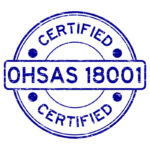Introduction to How many clinical hours for med school
Embarking on the journey to medical school is no small feat. Aspiring doctors often find themselves delving into a world filled with textbooks, exams, and endless hours of studying. However, one crucial aspect that stands out amid this academic whirlwind is clinical experience. But just how many clinical hours for med school should students aim to accumulate?
Understanding the significance of these hours can provide clarity and direction in your path toward becoming a physician. Clinical hours not only enhance your resume but also serve as vital hands-on learning experiences that prepare you for real-world patient interactions. As you navigate through applications and interviews, knowing what’s expected regarding clinical exposure will empower you to meet those benchmarks confidently.
Let’s dive deeper into why clinical hours matter and how they shape future healthcare professionals!
Importance of Clinical Hours for Medical Students
Clinical hours serve as a cornerstone of medical education. They provide students with firsthand experience in real healthcare settings, bridging the gap between theory and practice.
During these hours, aspiring doctors interact directly with patients. This interaction hones their communication skills and empathy—traits essential for effective caregiving.
Moreover, clinical exposure allows students to apply what they’ve learned in classrooms. Observing seasoned professionals helps them understand complex medical concepts more deeply.
These experiences also foster teamwork. Medical students often collaborate with nurses, physicians, and other healthcare workers, learning the dynamics of a multidisciplinary environment.
Accumulating clinical hours can ignite passion for specific fields within medicine. Discovering interests through hands-on experience guides future career choices effectively.
Requirements for Clinical Hours in Medical School
Medical schools have specific requirements when it comes to clinical hours. Typically, aspiring doctors must complete a minimum number of hours in direct patient care settings. This can range from 100 to over 1,000 hours depending on the program.
These clinical experiences often take place during internships or clerkships. They provide students with hands-on exposure to real-world medical practices and patient interactions.
Many institutions look for diversity in these experiences. Students are encouraged to work in various specialties, such as pediatrics or surgery, ensuring a well-rounded understanding of medicine.
Documentation is crucial too. Medical schools require precise records of completed hours and types of activities performed during those shifts.
Networking within healthcare environments can also be beneficial for securing opportunities that fulfill these hour requirements effectively.
Tips for Meeting Clinical Hour Requirements
Meeting clinical hour requirements can feel overwhelming, but with the right strategies, you can navigate this journey smoothly.
Start by planning your schedule early. Identify potential placements and volunteer opportunities well in advance to secure spots that align with your interests.
Networking is crucial. Reach out to mentors, professors, or professionals in the field for advice and leads on available positions. They often have insider knowledge about where you might find valuable experiences.
Consider diverse settings for clinical hours—hospitals, clinics, or community health centers all offer unique learning environments. Each experience contributes differently to your understanding of patient care.
Don’t shy away from online platforms either; many organizations provide virtual shadowing options or telehealth experiences that count towards your hours while enhancing tech skills.
Stay organized by tracking hours meticulously using apps or spreadsheets. Regularly reviewing progress will help ensure you meet all requirements without stress as deadlines approach.
Challenges and Solutions for Obtaining Clinical Hours
Obtaining clinical hours can be a daunting task for aspiring medical students. Many face challenges like limited opportunities or stiff competition for positions. These barriers can lead to frustration and uncertainty.
Networking plays a crucial role in overcoming these obstacles. Connecting with professionals in the field can open doors to volunteer positions, internships, or shadowing experiences that may not be widely advertised.
Time management is another key factor. Balancing studies, part-time jobs, and clinical exposure requires careful planning. Prioritizing tasks and setting specific goals can help streamline this process.
Additionally, exploring diverse settings such as clinics, hospitals, and community health organizations enhances learning while fulfilling requirements. Each environment offers unique experiences that contribute significantly to medical education.
Staying informed about local healthcare initiatives or programs can unveil new avenues for gaining essential hours without feeling overwhelmed by traditional paths.
The Role of Technology in Fulfilling Clinical Hour Requirements
Technology has transformed the landscape of medical education, especially when it comes to fulfilling clinical hour requirements. Virtual simulations and online platforms now offer students opportunities to gain valuable experience without being physically present in a clinic.
Telemedicine is another innovative tool that allows future doctors to interact with patients remotely. This can help students log hours while gaining insights into patient care from diverse settings.
Moreover, electronic health records (EHR) training provides crucial exposure to real-world documentation practices. Familiarity with EHR systems enhances both efficiency and understanding during clinical rotations.
Mobile apps are also emerging as essential resources for tracking progress and managing schedules related to clinical hours. They enable students to stay organized amid their busy lifestyles.
These technological advancements not only streamline the learning process but ensure that aspiring physicians are well-prepared for modern medicine’s demands.
Conclusion: The Value of Clinical Hours in Preparing Future Doctors
The significance of clinical hours in medical education cannot be overstated. These hours provide invaluable real-world experience, bridging the gap between theoretical knowledge and practical application. They allow aspiring doctors to interact with patients, understand their needs, and develop essential communication skills.
Clinical hours also help students grasp the complexities of healthcare settings. From hospitals to clinics, every environment presents unique challenges that shape a future physician’s approach to patient care. This hands-on experience is crucial for developing not only technical skills but also emotional intelligence.
As medical schools continue to evolve their curricula, the emphasis on clinical exposure remains constant. It’s clear that the more time a student spends in a clinical setting, the better prepared they will be for residency and beyond. The journey through medicine is demanding; however, those who invest effort into meeting their clinical hour requirements are often rewarded with greater confidence and competence as they enter practice.
Accumulating clinical hours helps mold well-rounded physicians ready to face the demands of modern healthcare while prioritizing patient welfare at every turn.

















